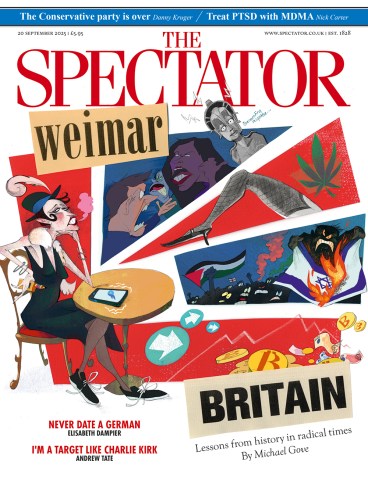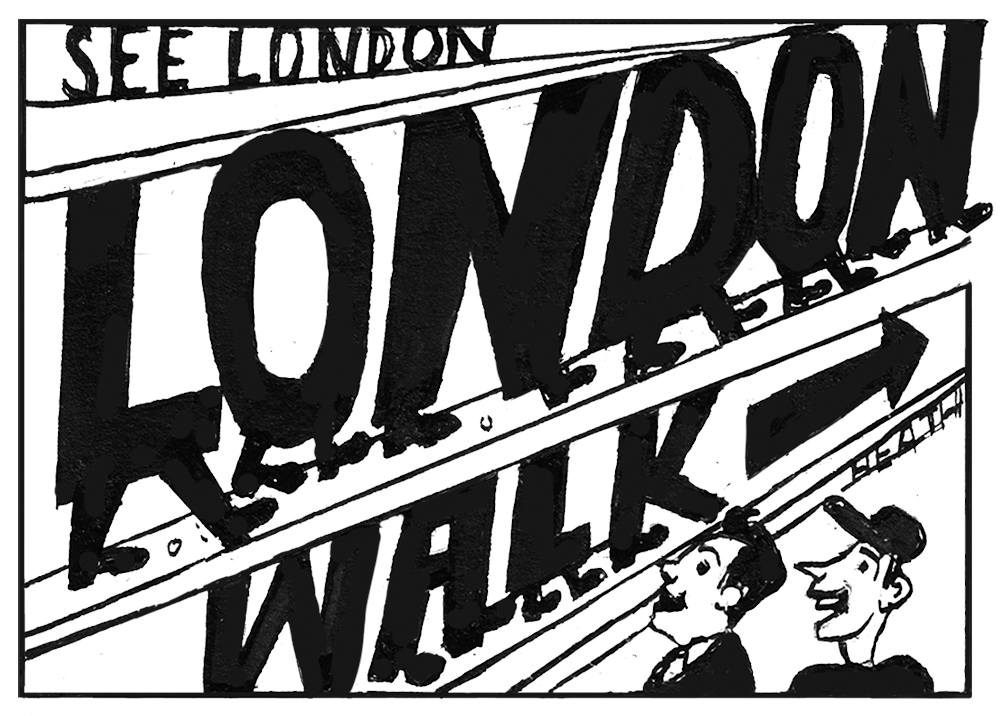
‘You should be pointing at things with an umbrella for a living,’ said my brother. He’d come to visit me in London and we’d been wandering the West End. The rain never appeared, but my umbrella seemed a natural implement with which to indicate the sights we passed. The Odeon Leicester Square, for instance, where I told Steve the story about Michael Caine (born Maurice Micklewhite) choosing his new surname: the cinema had been showing The Caine Mutiny. Or Piccadilly, so named because it was home to a tailor who’d made his fortune from pickadils, the ruffed collars worn by Elizabeth I, Walter Raleigh and the like. Or 3 Savile Row, on whose roof the Beatles played their last ever gig. The first policeman up there to stop them was Ken Wharfe, who 20 years later would be Princess Diana’s bodyguard.
The idea of leading guided walks always appealed, and the publication of my book Walk the Lines (I walked the whole Tube system overground) gave me something approaching credibility. Americans are always great clients – there’s a bond between the two nations, an awareness on their part that this is the mother country. History blows their mind: they think 200 years is a long time, while we think 200 miles is a long way. They love learning that St Martin-in-the-Fields (1726) is exactly half a century older than their country. And that the two Sohos have different etymologies: ours is an old hunting cry (for a hare – if a stag broke cover it was ‘tayho’), while in New York it’s ‘SOuth of HOuston Street’.
Children always ask the best questions. And they love a bit of gore, like Charles II digging up Oliver Cromwell’s corpse to put him on trial for the execution of his father. The body was propped up in the Old Bailey, and – would you believe it – a guilty verdict was reached. Cromwell was given the same treatment he’d meted out to Charles I: off came his head.
London is the perfect city for walks because of its variety. Centuries of riots, fires and war have meant that you’ll find 21st-century buildings next to 17th-century ones, next to bits of Roman wall. One minute you’re talking about the Monument being 202ft tall (so that if you laid it flat its top would reach the exact spot where the Great Fire started), the next you’re discussing the fact that time runs slightly faster at the top of 22 Bishopsgate than at its bottom, because gravity is weaker up there. Scientists proved it using two atomic clocks.
Different group sizes have different advantages. A couple or family mean it becomes more of a conversation, while larger groups create an energy all of their own. If the crowd is big enough I make a point of mentioning the birthday paradox: once a group exceeds 23, it becomes more likely than not that two people will share a birthday. Demonstrating it is great fun.
The best walks are where the information flows both ways, and people tell me things I didn’t know. I certainly expect this to be the case on a walk I’m doing on 24 September – it’s for Spectator readers, and a few spaces remain.
To buy tickets for Mark Mason’s guided walk, go to www.spectator.co.uk/events.







Comments